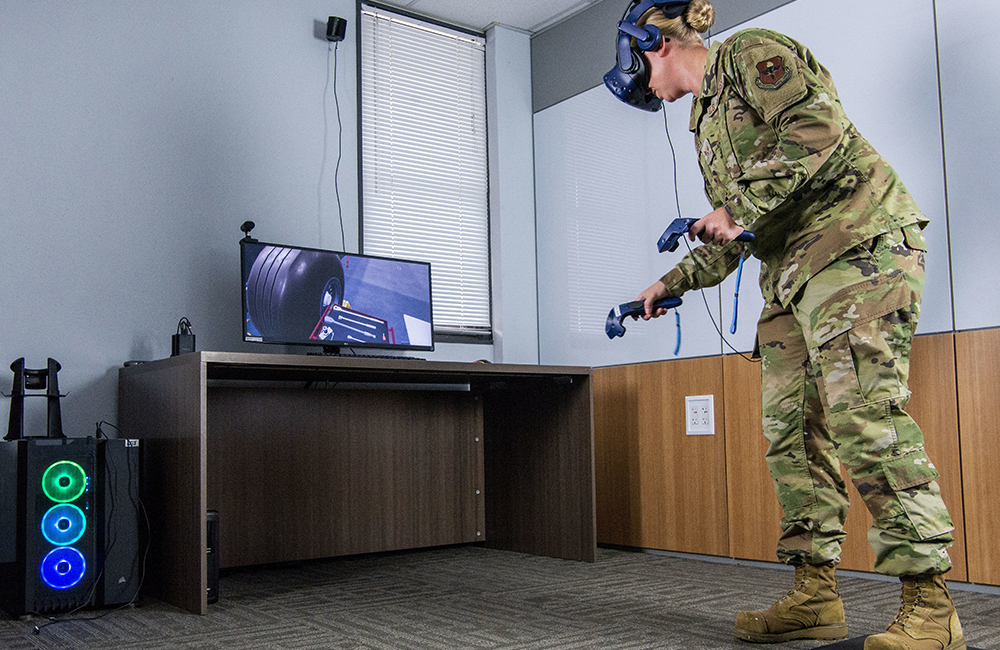DOD CDAO Defines AI Goals For Warfighter Support
The Defense Department’s newest office outlines its mission for assuring and transforming AI.

The Defense Department’s Chief Digital and Artificial Intelligence Office, which reached full operating capability as of June 1, plans to build out an AI assurance test case to show how AI-enabled systems can support the warfighter mission.
According to Jane Pinelis, chief of the AI Assurance Directorate at CDAO, the goal of AI assurance is to provide the arguments and evidence that DOD AI-enabled systems can meet warfighter requirements and perform adequately in an operational environment according to the necessary technical, effectiveness, suitability and survivability requirements.
“The systems also conform to our responsible AI principles. We know that no system will ever be perfect, but it’s critical that any technology that we provide to our warfighters is an asset and not a liability,” Pinelis said during the 2022 DOD Digital & AI Symposium Tuesday.
Over the years, tests and evaluations have built a body of evidence to assure DOD that AI technologies are trustworthy. But AI continues to introduce new challenges.
Diane Staheli, chief of responsible AI at CDAO, believes a good way to ensure deploying responsible AI across DOD is by defining and streamlining the AI development pipeline.
“How do they integrate and how does someone take something from concept to solution through this pipeline and apply each one of those point solutions on the way and figuring that out and making it easy?” Staheli asked.
Alka Patel, former chief of responsible AI at the Joint Artificial Intelligence Center (JAIC), which was absorbed by the CDAO, said: “I think there needs to be points in that pipeline to have conversations around the socio-technical aspects of these applications and capabilities. I also think that the other piece of this is that at DOD, privacy and safety need to be elevated in these conversations. Both of those are critical pieces to assuring the responsible employment of AI.”
The CDAO also aims to further drive AI transformation. Former DOD Chief Data Officer David Spirk said leadership prioritization and IT modernization are very important to this process.
“Understanding where you are at echelon at DOD is key,” he said during the symposium Tuesday. “Pilots and prototypes are everything, live in the formation not in a lab but in your live data workflows that are testable and repeatable. If you can do that, and when you do that, you accelerate very fast and you leave the imagination into the warfighters, operators and domain experts not the data scientists and AI professionals who think they know what they need.”
Dr. Aleksander Madry, professor of cadence design systems computing at Massachusetts Institute of Technology (MIT), said leadership prioritization is key to successful AI adoption.
“Leadership needs to explain to everyone what they are doing, which steps should or should not be taken. Also realizing you need to engage and there will be mistakes,” he said during the symposium Tuesday.
This is a carousel with manually rotating slides. Use Next and Previous buttons to navigate or jump to a slide with the slide dots
-

AI Foundations Driving Government Efficiency
Federal agencies are modernizing systems, managing risk and building trust to scale responsible AI and drive government efficiency.
43m watch -

Agencies Tackle Infrastructure Challenges to Drive AI Adoption
Federal agencies are rethinking data strategies and IT modernization to drive mission impact and operational efficiency as new presidential directives guide next steps.
5m read Partner Content -

Generative AI Demands Federal Workforce Readiness, Officials Say
NASA and DOI outline new generative AI use cases and stress that successful AI adoption depends on strong change management.
6m read -

The Next AI Wave Requires Stronger Cyber Defenses, Data Management
IT officials warn of new vulnerabilities posed by AI as agencies continue to leverage the tech to boost operational efficiency.
5m read -

Federal CIOs Push for ROI-Focused Modernization to Advance Mission Goals
CIOs focus on return on investment, data governance and application modernization to drive mission outcomes as agencies adopt new tech tools.
4m read -

Fed Efficiency Drive Includes Code-Sharing Law, Metahumans
By reusing existing code instead of rewriting it, agencies could dramatically cut costs under the soon-to-be-enacted SHARE IT Act.
5m read -

Agencies Push Data-Driven Acquisition Reforms to Boost Efficiency
New initiatives aim to increase visibility of agency spending, improve data quality and create avenues to deploy solutions across government.
5m read -

Data Transparency Essential to Government Reform, Rep. Sessions Says
Co-Chair of the Congressional DOGE Caucus Rep. Pete Sessions calls for data sharing and partnerships to reduce waste and improve efficiency.
5m read -

Navy Memo Maps Tech Priorities for the Future Fight
Acting CTO’s memo outlines critical investment areas, from AI and quantum to cyber and space, as part of an accelerated modernization push.
5m read -

DOD Can No Longer Assume Superiority in Digital Warfare, Officials Warn
The DOD must make concerted efforts to address cyber vulnerabilities to maintain the tactical edge, military leaders said at HammerCon 2025.
4m read -

New NSF Program Cultivates the Future of NextG Networks
The agency’s new VINES program looks to tackle key challenges like energy efficiency and future-proofing wireless tech.
21m watch -

DHA CDAO Spearheads Master Data Catalog to Boost Transparency
Jesus Caban plans to boost DHA's data maturity through a new master data catalog, governance frameworks and inventory of tech tools.
5m read




